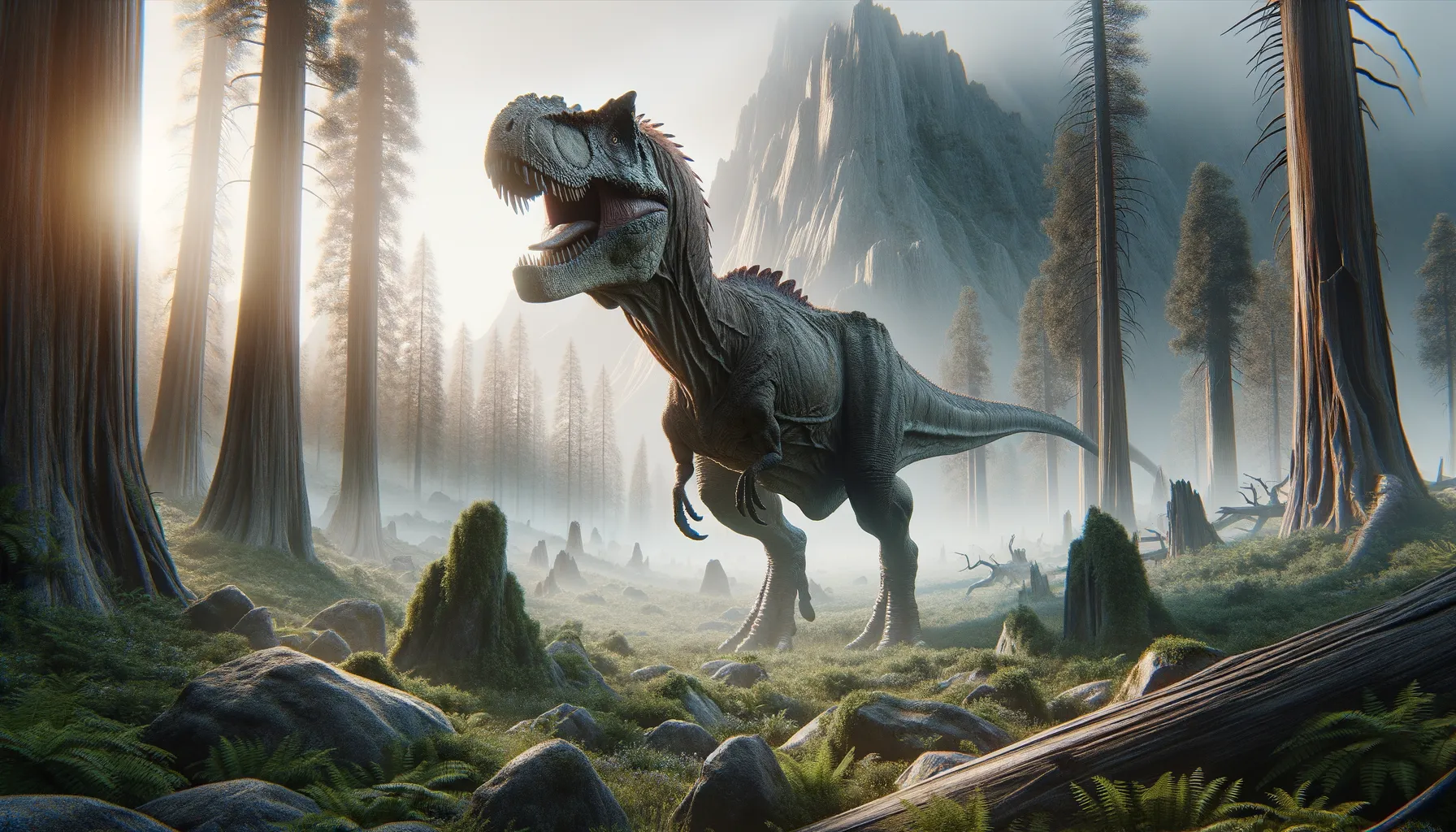
Dynamoterror
A prehistoric terror from the late Cretaceous.
Period
Cretaceous
Length
Around 9 meters long.
Height
Approximately 2.2 meters at the hips.
Weight
Estimated around 1 ton.
Dynamoterror was a large theropod dinosaur that roamed what is now North America during the late Cretaceous period. As a member of the tyrannosaurid family, it likely played the role of a top predator in its ecosystem. Discovered in New Mexico, the fossil remains have helped paleontologists piece together its existence, providing insights into the diversity and evolution of tyrannosaurs toward the end of the dinosaur age.
Diet
As a carnivore, Dynamoterror likely fed on large herbivorous dinosaurs. Its diet would have consisted of meat, possibly including both scavenging and active hunting, depending on the availability of prey.
Hunting
Dynamoterror may have used ambush tactics to surprise its prey. It became an efficient predator by relying on its strength and powerful jaws to capture and subdue its meals.
Environmental challenges
The late Cretaceous period was marked by fluctuating sea levels and volcanic activity. Dynamoterror faced the challenge of adapting to these changes, possibly affecting the availability of prey. Evolving ecosystems could have influenced its hunting strategies and habitation patterns.
Speed
Relatively slow, relying on strength over speed.
Lifespan
Potentially several decades, like large modern reptiles.
First discovery
First found in 2012 in New Mexico, United States.
Fun Facts
- Dynamoterror means 'powerful terror', a name that reflects its likely fearsome presence in its habitat.
- It lived around 80 million years ago during the Late Cretaceous period.
- Dynamoterror was a type of theropod dinosaur, which means it was a bipedal carnivore.
- The dinosaur was discovered in what is now New Mexico, USA, in a rock formation called the Menefee Formation.
- Despite its fierce name, Dynamoterror is actually known from just a partial skeleton, so many details about its appearance remain a mystery.
- It is believed to be related to other famous theropods like Tyrannosaurus rex.
- The discovery of Dynamoterror helps scientists understand the diversity and distribution of tyrannosaurid dinosaurs in North America.
Growth and Development
Juvenile Dynamoterror likely grew rapidly, with growth rates stabilizing as they neared adulthood. This pattern is similar to other large theropods, which needed to reach a formidable size to compete with other top predators.
Habitat
Dynamoterror lived in what is now the southwestern United States, an area that was a mix of coastal plains and forests. The environment provided ample opportunities for hunting and scavenging among diverse ecosystems of the time.
Interaction with other species
As a top predator, Dynamoterror likely had few natural enemies and competed with other carnivorous dinosaurs for food. It interacted with various species, primarily through predation but also through indirect competition for resources.
Natural lifespan
Lived long enough to reach full size, likely several decades.
Reproduction
Dynamoterror, like other theropods, likely laid eggs. Nesting habits would have been crucial for the protection and survival of its offspring, possibly involving some form of parental care.
Social behaviour
There is limited evidence, but it's possible that Dynamoterror was solitary, only coming together for mating. It might have exhibited territorial behavior, established through displays or vocalizations.
Fossil locations
To date, Dynamoterror fossils have been primarily found in New Mexico. These findings contribute significantly to our knowledge of North American tyrannosaurs. The location suggests it was adapted to life in a variety of Cretaceous habitats across the region.
